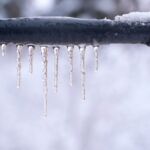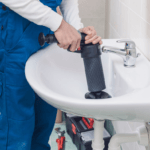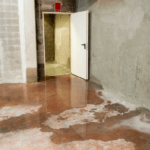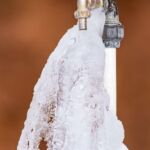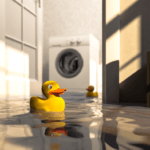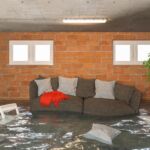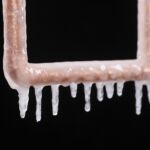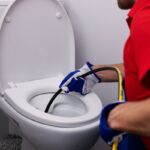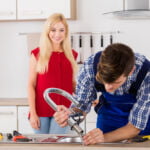
Aug 20, 2023 | Plumbing services
Plumbing emergencies, when they strike, can potentially cause significant damage to your home and create a lot of stress. Quick thinking and prompt action are crucial to mitigating the impact of such incidents, which can range from burst pipes to overflowing toilets.
In this article, we aim to discuss some common plumbing emergencies and provide you with helpful tips on how to navigate them successfully.
Burst Pipes
Water damage and flooding can occur within minutes after a pipe ruptures. To prevent further leaks from bursting pipes, turn off the water shut-off valve as soon as possible. The damaged pipe should be immediately repaired or replaced by a licensed plumber once this has been done.
Clogged Drains
It is possible for severe drain clogs to cause overflows, which can cause flooding and damage to fixtures. When you encounter a clogged drain, you can try to unclog it with a plunger or drain snake. Using chemical drain cleaners can damage pipes, so it is advised not to use them. A professional plumber should be consulted if the clog persists.
Overflowing Toilets
Beyond being aesthetically unpleasing, an overflowing toilet can cause water damage. In the event of a toilet overflow, locate the water shut-off valve nearby or behind the toilet and turn it off to halt the water flow. Drain any excess water in the bowl using a bucket or towels, and call a plumber to address the root cause—whether it’s a clog or a broken toilet mechanism.
Water Heater Malfunctions
A malfunctioning water heater may result in an absence of hot water or even present safety risks. If you notice any issues with your water heater, such as unusual sounds, leaks, or a complete lack of hot water, it’s recommended to get in touch with a qualified plumber for inspection and repairs.
Sewer Backups
Sewer backups can give rise to unpleasant odors and potential health hazards. If you encounter a sewer backup, avoid using any plumbing fixtures and immediately call a plumber. It’s not advisable to attempt fixing the issue yourself, as handling sewage-related problems safely requires specific expertise.
Maintaining calm and acting swiftly in the face of any plumbing emergency is crucial. While the advice provided here will help limit immediate damage, it’s essential to call a professional plumber for a thorough assessment and proper repairs.
In Summary
Navigating the landscape of plumbing emergencies can be daunting, but with a basic understanding of what to do in such scenarios, you can minimize potential damage to your property. The importance of professional intervention in these situations cannot be overstated, and the role of an experienced, licensed plumber is critical in ensuring your plumbing systems are correctly fixed and safely operational.
Facing a plumbing emergency or need preventative maintenance? Tap Tech has over 25 years of experience handling any residential or commercial plumbing crisis quickly and efficiently. Our team of licensed plumbers is available around the clock to diagnose issues and make critical repairs to minimize damage.
With Tap Tech, you get upfront and transparent pricing on all services. Whether it’s late at night, early morning, weekends or holidays, you can trust our experts to resolve burst pipes, overflowing toilets, broken water heaters, and other disasters promptly and professionally.
Dial 343-305-1172 today, and let us be your reliable ally in resolving all your plumbing concerns.
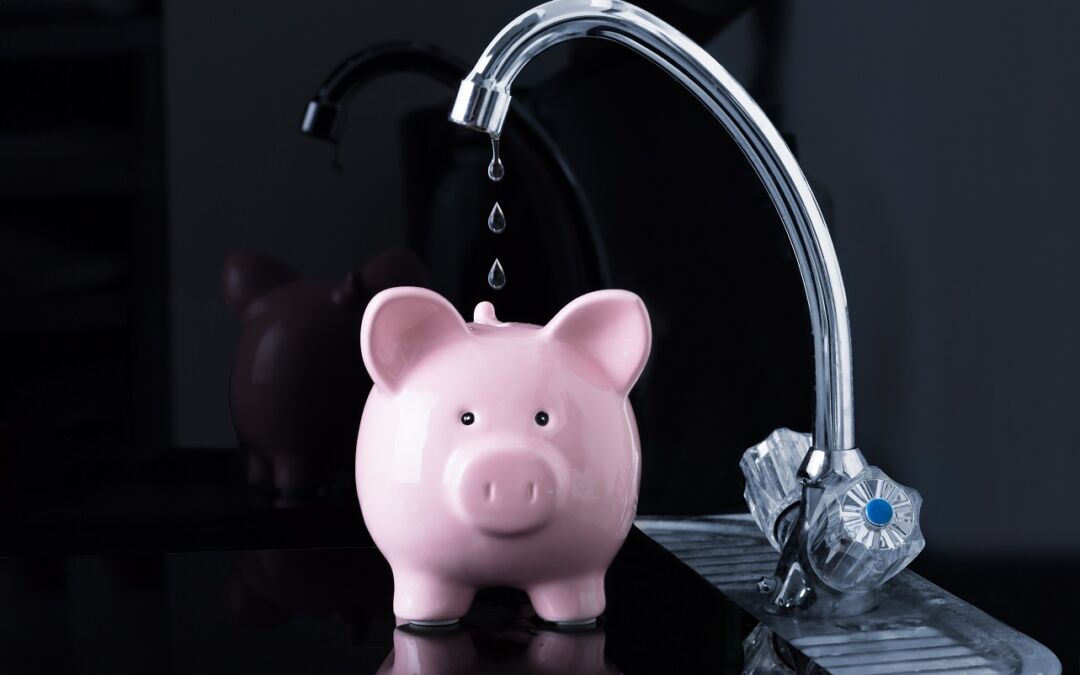
Aug 10, 2023 | Leaking Pipe, Plumbing services
Dealing with a leaking outdoor faucet can be a frustrating experience. However, understanding the potential causes of the leak and how to address them can save you time, money, and water. In this comprehensive guide, we will explore common reasons for outdoor faucet leaks and provide insights into resolving them. While some issues can be fixed by homeowners, certain situations may require professional assistance to ensure a proper repair.
Aging Plumbing
Over time, outdoor plumbing can deteriorate due to various factors such as extreme temperatures, exposure to harsh chemicals, freezing, and corrosion. These conditions can weaken the pipes and joints, leading to leaks in your outdoor faucet. If your outdoor faucet is leaking and the plumbing is old or damaged, replacing it may be necessary.
A professional plumber can assess the condition of the plumbing system and provide expert guidance on the best course of action.
Faulty Washer
A faulty washer is a common cause of outdoor faucet leaks. The washer, a small rubber gasket located inside the spigot, creates an airtight seal between the spout and the base of the faucet. Over time, the washer can deteriorate, become worn, or develop cracks, leading to water leakage when the faucet is turned on.
Addressing this issue promptly by replacing the old washer is essential to prevent further complications. Home improvement stores usually carry replacement washers that can easily be installed by homeowners.
High Water Pressure
Excessive water pressure can contribute to a leaking outdoor faucet. When the water pressure is too high, it puts stress on the faucet and its components, causing leaks to occur. Checking and adjusting the water pressure is a recommended first step.
Locate the pressure regulator, which is typically located near the main water supply valve, and lower the pressure if it exceeds the recommended levels. If you’re unsure about adjusting water pressure or have recently had work done on your property, consult a professional plumber for assistance.
Loose or Damaged Connections
Loose or damaged connections between the outdoor faucet and the water supply line can result in leaks. Inspect the connections for any signs of wear, corrosion, or loose fittings. Tighten loose connections using an adjustable wrench, being careful not to overtighten.
If the connections are damaged or corroded, they may need to be replaced. In such cases, it is recommended to consult a professional plumber who can ensure proper installation and prevent further damage.
To conclude
Leaking outdoor faucets require prompt attention to prevent further damage, water wastage, and potential complications. Understanding the potential causes, such as aging plumbing, faulty washers, high water pressure, or loose connections, allows you to take appropriate action.
While some minor issues can be resolved by homeowners with the necessary skills and tools, it’s advisable to seek professional help for complex repairs or replacement to ensure accurate diagnosis and reliable solutions. Professional plumbers possess the expertise and experience to handle common outdoor plumbing problems efficiently, ensuring the long-term functionality of your outdoor faucet.
For Plumbing Solutions, Tap into Tap Tech!
For over 25 years, Tap Tech has been South Eastern Ontario’s premier plumbing company. No matter what residential or commercial plumbing issue you’re dealing with – from leaky pipes and clogged drains to faulty water heaters and sewer backups – our team of licensed experts has the skills and high-tech tools to diagnose and solve any problem quickly and efficiently.
What sets Tap Tech apart is our commitment to transparent pricing. We provide free estimates and upfront quotes on all plumbing jobs so you never have to worry about surprise fees. From routine maintenance to middle-of-the-night emergencies, our technicians work promptly to get your plumbing back in working order.
Trust Tap Tech for all your emergency plumbing needs!

Aug 1, 2023 | Plumbing services
The peace of a serene home can often be disrupted by unwelcome bathroom issues. These disruptions can range from clogged drains to incessantly running water, all of which can pose serious inconveniences to our day-to-day activities. Nonetheless, a vast majority of these issues are surmountable with a little knowledge and simple actions.
In this comprehensive guide, we will explore some of the most common toilet problems and provide viable solutions, arming you with the knowledge needed to troubleshoot and address these concerns.
Clogged Toilet
A clogged toilet is arguably one of the most common, and inconvenient, issues that homeowners encounter. Tackling this problem begins by using a plunger to create and remove suction, thereby dislodging the obstruction. If the plunger proves ineffective, a toilet auger or plumbing snake could be your next course of action. For stubborn blockages, consider a specialized drain cleaning product or the services of a licensed emergency plumber.
Running Toilet
A running toilet, besides being a nuisance, can lead to water wastage and increased utility bills. More often than not, the culprit is a malfunctioning flapper valve. The remedy lies in removing the tank lid and ensuring that the flapper is correctly seated. If required, the flapper may need adjustments or a complete replacement. Another common cause of a running toilet is a faulty fill valve, which can usually be fixed by adjusting or replacing it.
Weak Flushing
A weak or ineffective flush could be a sign of a partial clog in the trap or drainpipe. Initially, attempt clearing the obstruction using a plunger. If this doesn’t work, a toilet auger might come in handy. In some cases, mineral deposit buildup can hinder water flow. In these instances, professional drain cleaning or a descaling product may be necessary.
Leaky Toilet
A leaking toilet can result in wasted water and potential damage to your bathroom floor. To identify the source of the leak, scrutinize different parts of the toilet, such as the tank, bowl, and water supply connections. Frequently, leaks are caused by faulty seals, loose connections, or broken parts. Depending on the specific issue, you may need to replace seals, tighten connections, or engage a plumber for more complex repairs.
Overflowing Toilet
An overflowing toilet can cause significant mess and distress. If your toilet bowl begins to overflow, immediately remove the tank lid and press down on the flapper to halt the water flow. Use a plunger to try and dislodge the obstruction. If the problem persists, switch off the water supply valve behind the toilet and seek immediate help from a professional emergency plumber.
Phantom Flushes
Occasionally, your toilet may refill itself, even when not in use, resulting in ‘phantom flushes.’ This issue is often due to a malfunctioning flapper valve that doesn’t seal properly. Adjusting or replacing the flapper can tighten the seal and prevent water from continuously seeping into the bowl.
Conclusion
While toilet problems can indeed be a source of frustration, the silver lining is that many of them can be resolved without having to call an emergency plumber. Being familiar with common toilet issues and knowing how to tackle them can save you time, money, and considerable stress. Always remember to use a plunger to clear clogs, check and fix damaged valves and seals, and enlist the help of a professional when dealing with complex issues or when drain cleaning is necessary. By taking a proactive approach to toilet maintenance, you can ensure a reliably functioning and dependable toilet in your home.
Take Action Today!
If you’re grappling with persistent toilet troubles or in need of expert plumbing services, it’s time to take action. At Tap Tech, we understand the value of your time and the importance of immediate assistance. We prioritize emergency calls, making ourselves available to tackle your plumbing needs promptly. Our first-class 5-star experience comes with transparent, upfront rates that are communicated over the phone.
You can count on Tap Tech for comprehensive, dependable plumbing services that will keep your home running smoothly, whether you’re experiencing flooding, sewer backup, sump pump failure or any other plumbing emergency.
Contact us on 343-305-1172, and we’ll put an end to your plumbing problems!
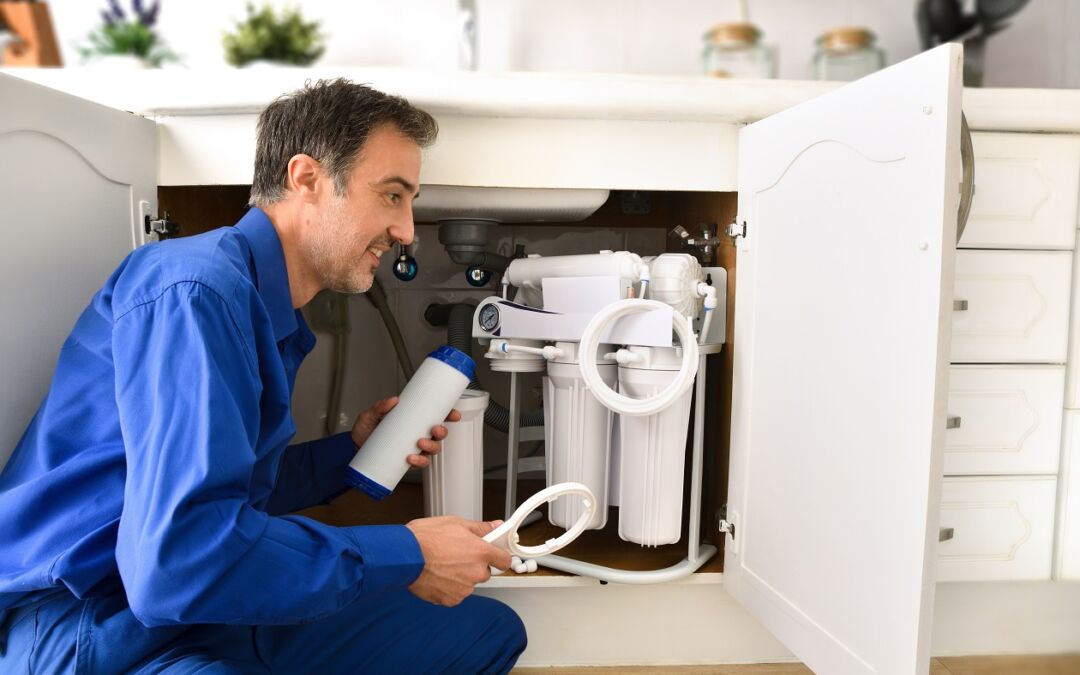
Jul 7, 2023 | Blogs, Plumbing services
Plumbing upgrades that improve functionality are usually the best way to increase your home’s value. This includes upgrading drains that run slow or clog easily.
Having your pipes replaced with modern materials is also another good plumbing upgrade to make your home more appealing to potential buyers. Old galvanized pipes are prone to corrosion and can cause numerous problems over time.
Dedicated Laundry Room
A dedicated laundry room is one of the top features homebuyers want in a new home. Most older homes include washers and dryers tucked away in a closet or adjacent to bedrooms, but upgrading to an open utility space is a great way to increase your home’s value.
Add a sink to your laundry room design for hand-washing delicates or soaking set-in stains. This space is also handy for washing mop water, rinsing dishes or filling pet water bowls. You can even use the sink to clean household items you don’t want to leave in the kitchen, like craft supplies or pet toys.
Install Eco-Friendly Fixtures
In a world where environmental protection is becoming more of a priority for homeowners, it’s important to know how to install eco-friendly products.
One of the most common goals during bathroom and kitchen remodels is to boost water and energy efficiency throughout the home. The simplest way to do this is by installing new household appliances that are certified by ENERGY STAR® Canada.
Another way to do this is by replacing old galvanized cast iron or clay piping with copper, PVC or PEX pipes. These are more durable and will not corrode over time. They are also a safer option than older piping that may contain lead. Replacing these older piping systems is an excellent way to lower your home’s risk of future sewage backups caused by heavy rainstorms or snow melt.
Upgrade Your Bathroom
A new bathroom can be a major selling point for your home, especially if you’re looking to sell. Adding one to your house may not only boost your resale value, but it can also make your home feel more spacious and comfortable for current or potential buyers.
Upgrade your toilets to energy-efficient models. A High Efficiency Toilet (HET) may reduce your water consumption by up to 4.8 litres per flush. According to BC’s regional government body, the CRD (Capital Regional District), older toilets typically use up to 13 to 25 litres per flush. In addition, you may receive a rebate for each low-flush toilet installed in your home.
Water Filtration
Another way to save water and improve the quality of your drinking water is to install a water filtration system. You can choose from a faucet-mounted or countertop water filtration system designed to remove unwanted elements from your water. This should improve your health over time, and ensure that your family is safe from toxins.
24/7 On-Demand Premium Plumbing Service
If your water heater breaks, or if you have a water leak in your home, do you know who to call? If you’re located in South Eastern Ontario, get in touch with Tap Tech’s expert, 5-star plumbers today.
We’ll get you an immediate quote over the phone, and dispatch our emergency plumbing technicians to your home within the same-day to ensure your plumbing emergency is quickly resolved.
Call your reputable, 5-start plumbers today at 343-305-1172 or book your appointment online.

Jul 5, 2023 | Blogs, Plumbing services
Plumbing problems happen at the most inconvenient times, and while some require a professional plumber, others can be solved by a homeowner with basic tools. Here are seven essential plumbing tools every homeowner should have on hand.
1. Plunger
There are different types of plungers available, and some may be better suited for specific applications. For example, a standard plunger works best for sinks and tub drains, while a flange plunger is ideal for toilets. If you can’t get a clog to budge, call a plumber and avoid chemical drain openers, which can damage your pipes.
2. Adjustable Wrench
A staple in every plumber’s tool bag, the adjustable wrench (also known as a crescent wrench) is used to tighten or loosen nuts and bolts. A prepared plumber works with an entire set of these wrenches to work on a variety of different pipes and fixtures.
This handy tool has the heft to lock onto pipe fittings without damaging them, and it comes in a number of different sizes to accommodate any situation. The handle is also a bit wider than many similar tools to feel comfortable in your hands and provide added torque when you need it.
3. Slip-Joint Pliers
A pair of pliers—specifically, slip joint pliers—are essential tools for plumbers. They allow professionals to loosen or tighten nuts and bolts too small for a wrench to grip, and to squeeze into narrow spaces where a standard screwdriver won’t fit.
4. Snake Camera
If you’re looking for a snake camera (also known as a borescope) to help with a tough sewer line clog or any other kind of visual inspection, make sure it has enough bright illumination. This feature is also important when working in wet or dusty conditions.
You should also check the IP rating on your chosen snake camera to ensure it can withstand wet environments. The higher the rating, the better it is for working in harsh conditions.
A snake camera is a great tool to have on hand. It can help identify the source of a problem and resolve it quickly and efficiently. It can also save time and money when compared to traditional methods, as it is less damaging and invasive with improved accuracy.
5. Pipe Cutter & Soldering Pliers
If your pipework is made of copper or plastic, you’ll need a tool to cut it. A ratcheting PVC tubing cutter is like super-strong scissors that can slice through these materials, and it’s one of the most essential plumbing tools for a homeowner.
Many plumbers seal copper piping by soldering it, and you’ll need a reliable tool for this task. A pair of adjustable soldering pliers can be used to loosen or tighten the solder on a copper pipe joint.
6. Drain Snake/Plumbing Auger
A drain snake, also called a plumbing auger, is a long metal cable that you feed down your sink or toilet drain to remove blockages. The head of the drain snake has many small hooks for snagging hair and soap scum buildup that accumulates in your drain line. You can find these tools at most home improvement stores. There are also power augers that have motors to generate more force, practical for larger lines with tough clogs.
To use the snake, first, loosen the screw at the end of the drum to extend the cable. Uncoil the cable slowly into the sink drain opening (or the p-trap, if you’ve removed it). Once you feel resistance, turn the crank to rotate the head and feed it further into the pipe. Keep rotating and feeding until you break up or clear the clog.
7. Sealant Tape
Plumbers often use thread sealing tape, sometimes called PTFE, plumber’s tape, or Teflon tape. This tool is essential to help patch and prevent possible leaks at pipe-threaded joint connections. These tapes are able to resist high and low temperatures, flex for better form-fitting coverage, and never dry out.
Plumber On-Demand Near You
If you’re in need of a plumber in South Eastern Ontario that provides same-day service with a 5-Star Experience, look no further than our expert team at Tap Tech.
For individuals and families who require a plumber NOW to quickly resolve a plumbing emergency, call 343-305-1172.
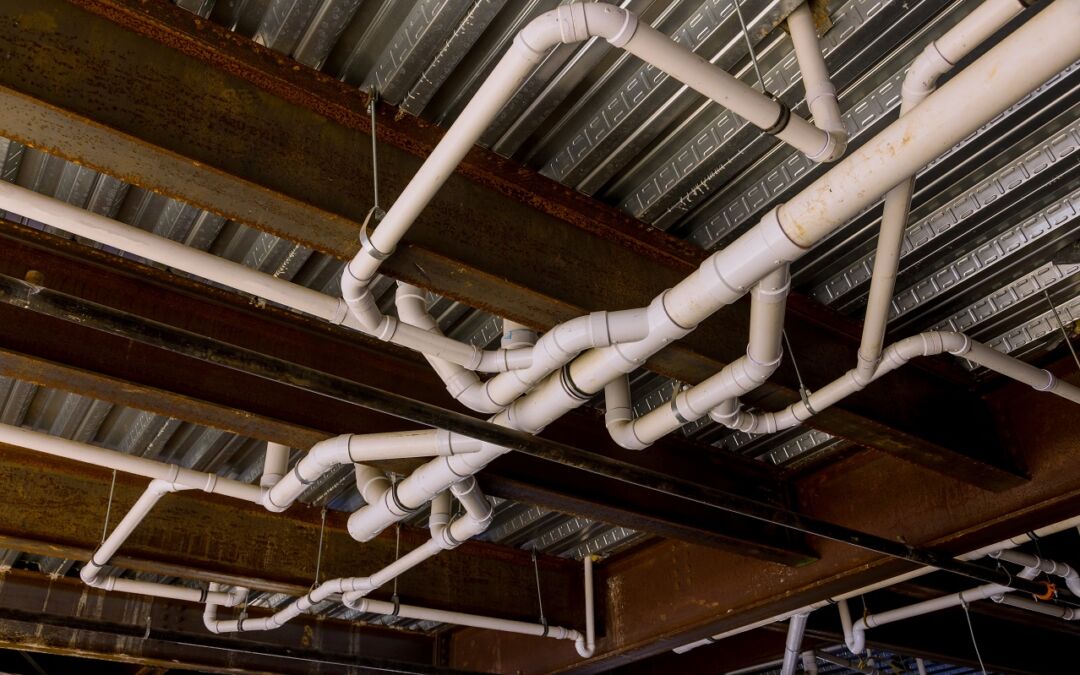
Jul 3, 2023 | Blogs, Plumbing services
The home plumbing system has two subsystems: water supply and drainage. The former brings pressurized water in, while the latter removes wastewater.
Understanding these systems can help a housing inspector recognize plumbing defects. Let’s begin with an overview of each component. Then we’ll move on to the basics of residential plumbing.
Plumbing Systems: The Basics
A residential plumbing system is a complex web of pipes that bring fresh water in, drain wastewater out, and connect all the fixtures in your home. A casual gaze at its interwoven mesh may make it seem overwhelming, but understanding the basics will help you navigate it like a pro.
City water enters your house through a huge pipe called the main. It is usually buried underground and made from copper, cast iron or galvanized steel. There are bridges over it all around your home that link your water service line to your plumbing pipes. These are called fixtures and include faucets, toilets, showers and dishwashers. As clean water enters a fixture, wastewater leaves through a downward-angled pipe called a drainpipe. This carries the waste to your sewer line.
Water Supply
The water supply system carries fresh, clean drinking water throughout the home, using pipes that can be made of copper, galvanized steel or PVC. These pipes can be buried underground, running under floors or between walls.
The water supply is typically connected to a water meter by the curb stop and to the city main by a service line. If a connection to another water source is desired, an application must be made to your municipal Water Department.
Water Filtration Systems
Water filtration systems remove contaminants from the water that enters your home, making it cleaner and safer to drink and use for other household purposes. These can include systems that can be attached to faucets or installed under the sink and plugged into any tap to provide filtered drinking water at the touch of a button. Only accredited professional plumbers should handle the installation, maintenance and repair of these systems.
All water pumps, tanks, wells, storage containers and other equipment containing potable water shall be effectively protected from contamination by means of covers, guards, copings and casings. They also need to be adequately insulated to prevent freezing and melting of the water supply piping in cold weather.
Water Heater
The water heater is another crucial component of your plumbing system. The tank itself is filled with a mixture of sediment, including scale, rust and bits of corroded anode that build up over time. This is why it’s important to have a drain valve on the bottom of your water heater to drain sediment from the tank periodically, e.g. every six months.
There is also a temperature control valve on the hot water service line to raise or lower the temperature of your water. This is typically set at 50 degrees Celsius and is generally the same as your hot water heater’s setting.
Drainage
Drain-Waste-Vent systems, or DWV, are responsible for the networks of drains that take waste away from fixtures and into the sewer system. They also work to keep the proper balance of pressure and air in the plumbing system, working to prevent drain clogs or wastewater back-ups.
In the past, most drainage was done through open drains that took up large amounts of land. However, newer drainage systems are often constructed with buried pipe drains that do not use any of the land and are more environmentally friendly. It is still important to maintain your sewer clean-out so that you can clear out the drain line from time to time.
Many homeowners don’t give a lot of thought to the drain and waste system until something goes wrong! A clogged shower or drain can be quite disruptive to daily life and requires fast action to remedy. Fortunately, South Eastern Ontario emergency plumbers are available on-call 24/7 with Tap Tech.
Call today at 343-305-1172.
Septic System
A septic system is an on-site sewage treatment system that handles household waste in areas where public sewer is not available. It consists of a house sewer drain, septic tank, and soil absorption field (or drain field). This system is designed to treat and dispose of wastewater without contamination, bad odours, or affecting the inhabitants’ health. A septic system is a great alternative to a sewer system for rural or remote areas where the cost and regulations of connecting to the main line are prohibitive.
A house sewer line collects all the discharge from toilets, showers, sinks, and other fixtures and connects to the septic tank. The septic tank holds the wastewater and allows it to separate into three layers. The floatable organic matter, such as grease and oils, floats to the top and forms a layer called scum. The heavier solids settle to the bottom of the tank and form a layer known as sludge. The liquid portion of the wastewater, called effluent, exits the septic tank into the drain field.
The septic tank also contains a vent that permits gasses to escape. The septic tank should be inspected and pumped regularly. When the septic tank is full, the liquid waste may enter the drain field and cause a back-up or overflow of sewage into the home. The drain field is a series of trenches, perforated pipes, or chambers where the “effluent” is slowly released into the soil to be absorbed by bacteria and other microorganisms. The soil then naturally breaks down the contaminants.
Septic Tank Maintenance
A properly sized and installed septic system should last for many years. However, septic systems can fail when they are not properly maintained. If you have questions about a septic system, contact a licensed professional who can inspect your tank, measure the tank layers, and pump it out as needed.
It is generally recommended that you have your septic tank pumped every two to three years to ensure that the solids do not build up and block the drain field. A Septage Waste Transporter can also help you maintain a regular schedule of pumping and inspections.
Plumbing Experts in South Eastern Ontario
Contact Tap Tech for 5-star plumbing service with rates immediately provided up-front over the phone. We are available for same-day service, with 24/7 plumbing to quickly resolve your emergencies.
Get in touch today at 343-305-1172.






